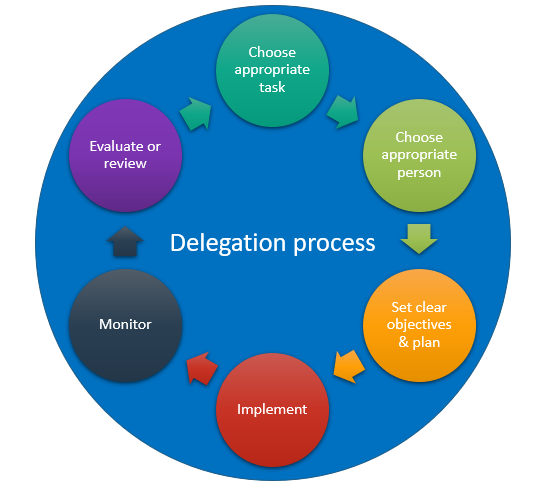Definition: Delegation refers to the systematic transfer of tasks, decision-making authority, and responsibility from higher to lower organizational levels. It is a central component of modern management and organizational development.
Key Elements of Delegation
In today’s organizations, delegation goes far beyond simply assigning tasks. It includes the transfer of:
-
Operational tasks
-
Decision-making authority (technical, personnel, financial)
-
Responsibility for outcomes within a clearly defined scope
Despite this transfer, ultimate accountability remains with management. Leaders may delegate authority—but never responsibility for overall results.
Prerequisites for Effective Delegation
To delegate effectively and ensure performance, the following conditions must be met:
-
✅ Clear communication: Employees must be fully informed about the objectives, expectations, and boundaries.
-
🎓 Sufficient qualification: Employees need the appropriate technical expertise and experience.
-
📜 Defined authority and responsibility: The scope of decision-making and accountability must be clearly outlined.
Benefits of Delegation
Delegation offers advantages for both managers and employees:
For Managers:
-
Reduces workload and operational complexity
-
Frees up time for strategic and high-priority tasks
-
Encourages team development
For Employees:
-
Increases autonomy and motivation
-
Enhances competence development
-
Fosters self-actualization and job satisfaction
-
Strengthens identification with tasks and organizational goals
According to organizational research (e.g., Kick 1992; Sydow 1989), effective delegation is considered essential for high-performance workplaces and organizational flexibility.
Delegation vs. Decentralization
-
Delegation = Vertical transfer of authority from superior to subordinate.
-
Decentralization = A broader organizational design principle that distributes decision-making across various levels or units.
Summary
Delegation is a foundational management principle that fosters empowerment, improves efficiency, and enables dynamic organizational structures. When implemented thoughtfully, it aligns with employee development and contributes to long-term business agility.
« Back to Glossary Index





![15 Employee Offboarding Templates That Save Hours of HR Time [Free Downloads] 15 Employee Offboarding Templates That Save Hours of HR Time [Free Downloads]](https://i1.wp.com/www.hrcloud.com/hubfs/Header.png?w=150&resize=150,100&ssl=1)
